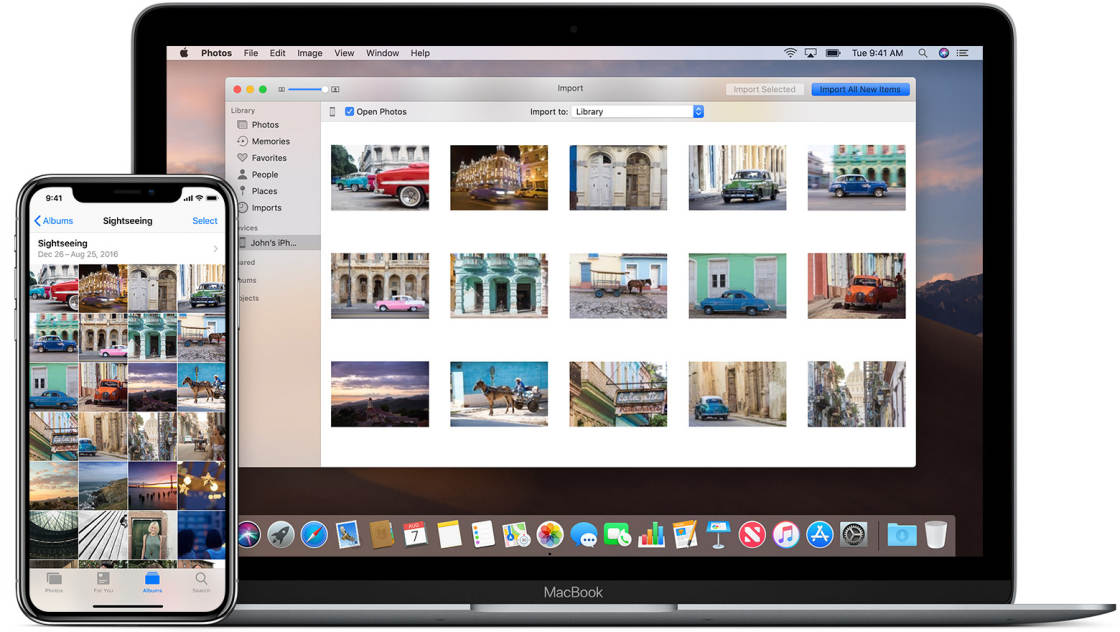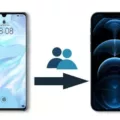If you’re an iPhone user, you know that transferring pictures from your iPhone to your Macbook can be a tricky process. Thankfully, with the right know-how, it’s easy to make the transfer.
First and foremost, make sure you’ve enabled Wi-Fi and Bluetooth on both your Macbook and your iPhone. It’s also important to make sure that you’re signed in with your Apple ID on both devices. Once these steps are complete, you can start transferring pictures from your phone to your laptop.
The best way to transfer pictures is through AirDrop. This secure file-sharing system encrypts all transfers for maximum security. All you have to do is choose the item (or items) that you want to transfer on either your iPhone or Macbook, then select ‘AirDrop’ from the Sharing menu when prompted. The item will then be sent directly from one device to the other over a secure connection – no cords or complicated setup required!
It should be noted that AirDrop is only available for Apple devices running iOS 7 or later and OS X Yosemite 10.10 or later. If either of these systems is not available on either device then there are alternative ways of transferring photos such as using iCloud Photo Library (which requires an internet connection), an email attachment, or third-party apps such as Dropbox or Google Drive (which also require an internet connection).
Finally, if none of these methods work then it may be necessary to restore your iPhone’s location and privacy settings by going into Settings > General > Reset/ Transfer or Reset iPhone. This should help resolve any potential connection issues that may have been preventing successful transfers in the first place – so don’t forget this step!
We hope this guide has helped shed some light on how to transfer pictures from your iPhone to your Macbook – happy sharing!

Troubleshooting Issues with Transferring iPhone Photos to Mac
It’s possible that you’re having trouble transferring images from your iPhone to your Mac due to connection issues generated by your location or privacy settings. To address this, you can restore your iPhone’s location and privacy settings by going to Settings > General > Reset/Transfer or Reset iPhone. If the issue persists, it could be a result of outdated software on either the iPhone or Mac, so make sure both are up-to-date and try again. Additionally, there may be an issue with the USB cable used to transfer photos, so make sure it is in good condition and check if using a different cable helps.
Transferring Photos Wirelessly From iPhone to Mac
Yes, you can wirelessly transfer photos from your iPhone to your Mac using AirDrop. To do this, make sure both your iPhone and Mac have Wi-Fi and Bluetooth turned on. Then, sign in with your Apple ID on both devices. Next, select the photo you’d like to transfer from your iPhone and then choose the Mac you want to send it to from the AirDrop menu. The photo will be securely transferred to your Mac in just a few seconds.
Transferring Files From iPhone to Mac Easily
The easiest way to transfer files from an iPhone to a Mac is with AirDrop. AirDrop is an Apple feature that allows you to quickly and securely share files, photos, documents, and more with another device that’s nearby. To use AirDrop, make sure both your iPhone and Mac are powered on, have Wi-Fi enabled, and have Bluetooth turned on. Then, open the AirDrop window on your Mac by selecting “Go > AirDrop” from the menu bar. On your iPhone, open the Control Center by swiping up from the bottom of the screen (or swiping down from the upper right corner in newer iPhones). Tap “AirDrop” and select “Everyone” (or just those in your contacts list) to start sharing files. On your Mac, you will see any shared items appear in a pop-up window. Just drag them over to save them to your device.
The Difficulty of Transferring Photos from an iPhone to a Computer
Transferring photos from iPhone to computer can be a difficult task because the photos are typically stored in iCloud rather than on the iPhone itself. This means that when you are trying to transfer data, only a smaller preview of your images is transferred to your computer, rather than the full-size images. To make sure you can transfer photos from your iPhone to your computer, you need to go into iCloud and disable the Photos option. Additionally, if you are using an Apple device like iTunes or Photos for Mac to transfer data, it can be difficult as these programs do not always recognize all types of file formats. Therefore it is recommended that you use third-party software such as iMazing or AnyTrans, which are specifically designed for transferring photos from iPhone to the computer.
Can I Transfer Files From iPhone to Macbook Using AirDrop?
Yes, you can AirDrop from your iPhone to your Macbook. All you need to do is make sure that both devices are signed into iCloud using the same Apple ID. Once you’ve sent the item from one device to the other, a notification will appear on your Macbook. From there, you can click the Accept pop-up menu and choose an option for how to save the item.
AirDropping Multiple Photos at Once
There is technically no limit to the number of photos you can AirDrop at the same time. However, it is important to bear in mind that transferring large volumes of photos will take longer than transferring fewer photos. This is especially true when using a Wi-Fi network with a slower connection speed. It’s best to transfer photos in batches so that you don’t overwhelm your network connection and end up with a long wait for all the photos to finish transferring.
Syncing an iPhone to a Mac Without a USB
To sync your iPhone to your Mac without a USB cable, you will need to use Wi-Fi syncing. To do this, first, make sure that both your iPhone and your Mac are connected to the same Wi-Fi network. Then, on your iPhone, go to Settings > General > iTunes Wi-Fi Sync and turn it on. On your Mac, open iTunes and select the device icon in the top left corner of the window. Then, click on Summary and ensure that “Sync with this iPhone over Wi-Fi” is checked. Finally, click Apply or Sync at the bottom of the window to begin syncing.
Conclusion
In conclusion, the iPhone is a powerful device with many features and capabilities. It can be used for a wide variety of tasks, from taking photos to researching information. Transferring files between your iPhone and Mac can be easily done using AirDrop, which offers secure, encrypted transfers. With its user-friendly interface and dynamic capabilities, the iPhone is an excellent choice for those looking to stay connected and productive on the go.








